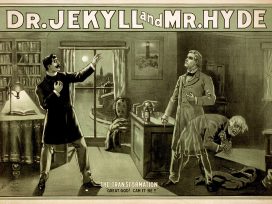Recently, the Romanian MEP Daniel Daianu (Alliance of Liberals and Democrats for Europe – ALDE) addressed a written question to the European Commission, in which he asked the Executive in Brussels to pay more attention to the “emergent economies in the EU”. Amongst the rush of measures taken to contain the crisis and the chorus of “reassuring” statements issued by the governments and central banks, this seems to me to be a remarkably rational stand.
Daianu rightly notices that talk about support for banks now encountering difficulties concerns “mostly the Eurozone and other old member states”. The new member states are being ignored, despite the fact that “these economies do not benefit from the advantages of having their own monetary reserves, have significant current account deficits, and are subjected to the effects of orienting themselves towards safe investments.” “How”, the Romanian MEP asks, “does the Commission intend to deal with the specific problems of these economies in the context of the international financial crisis and of the recession currently threatening Europe?” Until the Commission formulates an answer, the facts confirm Daianu’s observation: its concern seems to be directed towards the Eurozone states and towards the oldest members of the Union. Up to now, the European Commission has supervised national rescue plans for Ireland, France, Germany, Sweden, Denmark, The Netherlands, Portugal, and the UK. Plans submitted to the Commission by Austria, Italy and Spain are still awaiting approval from Brussels. Hungary has resorted to a loan from the International Monetary Fund in order to prevent a crash.
For a long time seduced by their economic growth, which has been faster than that of “Old Europe”, the new member states still entertain the idea that they will be less affected by the economic crisis. Yet according to Strategic Forecasting (Stratfor), a private intelligence service based in the US, the countries of central and eastern Europe, including Romania, are vulnerable in the face of recession: “Romania is confronted with an increased budgetary deficit of 2.5%, a trade deficit of 14%, and a public debt of 19% of the GDP, which raises serious doubts as to how Romania will be able to compensate for the budgetary hole during a liquidity crisis.” The recent speculative attack on the Romanian currency (leu) by several foreign banks, which was denounced by the governor of the Romanian National Bank, has conveyed to the public the following message: because the big European banks are in need of liquidity “up there”, they are trying to earn money fast “down here”. Further speculative attacks are to be expected, warns Stratfor.
The border between “Old” and “New Europe”, between the West and the East, which was seemingly forgotten to us, has re-entered the scene. This time it is not in connection with more or less abstract issues but has to do with highly concrete economical and financial concerns. Sauve qui peut seems to be the motto of the hour, despite the many summits supposed to have drawn up a “unified European plan” to combat recession. “Unified” is not the proper term here: besides the Central European Bank, which performs its role well, the European Union cannot, although it disposes over a sophisticated institutional system, impose an economic plan on member states. Even if a common set of regulations and measures were to be reached, differences would be manifest between member states, and above all between West and East: unemployment, inflation, budgetary deficits would affect each country differently. The problem is that a recession would have more severe consequences in the fragile and unpredictable eastern European countries, including at the political level. If, for instance, a “western” attack on the leu (or on any other national currency) were to succeed, populism would have a field day and eurosceptic trends would increase (despite the fact that the citizens from the former communist countries have generally supported EU accession).
At the beginning of the 1990s, one of the favorite arguments of those opposing Romania’s integration in the EU was: “All they want is to turn us into a market for their products,” Now, we are glad to be able to buy “their” merchandise along with “ours” in “western style” supermarkets: long live spending rates! But in times of crisis, the difference between what’s “theirs” and what’s “ours” tends to be experienced more dramatically and can generate strong resentments. The themes of the “united Europe” have been pushed into the background of late, due to a lack of time and interest – national governments are too busy conceiving anti-crisis solutions. Economically, they might be successful. But the “costs” may include imposing (or deepening) an opposition between the West and the East, between “Old” and “New” Europe.
6 November 2008






